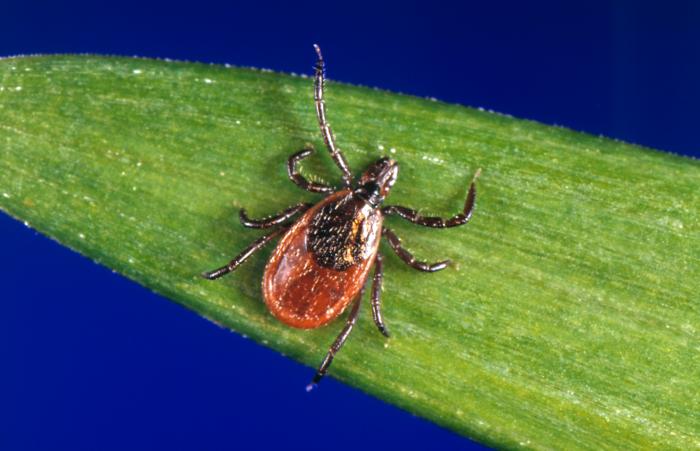The basics about protecting yourself from ticks & Lyme Disease

Lyme disease. The warnings about this tick-borne disease started in the 1970s and had grown to become a noticeable problem in the years since with more people infected.
Although Lyme disease is transmitted by immature nymphal ticks, there is a variety ticks with each passing on various diseases. Compounding the problem is their size. They look like a small speck of dirt. These tiny, minuscule insects, unless you know what you are looking for, can be easily missed on your skin or clothing.
They can be present at different times of the year, in different seasons and weather and in different terrain. What they have mostly in common is their location near the ground situating themselves on or near fallen logs, the lower section of tree trunks, in grasses and bushes and decomposed leaves.
Brush by them and they’ll latch onto a pant leg, arm or shoe. Occasionally, they’ll hitch a ride on your dog’s fur then move onto you when there’s a chance.
Once on you, a tick will travel up your clothing until it can reach the skin. Whatever disease the insect carries will infect you after it buries its mouth parts in your flesh and starts drawing blood. The longer it is attached, the carry the chance of it transferring a disease. Once engorged a tick is the size of a raisin. There is no pain to alert you to their presence.
So how do you defend yourself against these pests? Obviously, the best defense is avoiding them altogether. It that isn’t possible eliminate them as quickly as possible.
Other defense methods include wearing insect – repellent clothing that’s treated using a special method that fastens permethrin (repellent) to the fibers. Clothes can be washed up to 70 times with protection unaffected. Permethrin can also be bought as an aerosol at outdoor stores for self – treatment but protection against loss only lasts through five to six washings.
Do not overlook footwear and feet because ticks are a ground – loving insect. A study determined that footwear treated with permethrin afforded 74 times the protection of those not with it. Spray boots and shoes in a well – ventilated area and don’t inhale the vapors.
Also, apply insect repellent to open skin. The most effective contain DEET, lemon – eucalyptus oil, or picaridin. While out in the field, check yourself occasionally for ticks. Use fine-tipped tweezers to eliminate them. Don’t employ “home remedies” such as lighter fluid or dish soap. That can prompt the bug to vomit on you.
After your sojourn, make the next steps mandatory: put all clothing and run on high heat for 10 minutes to kill all ticks. Take a shower, check your body completely. When running soapy hands over your body, be sensitive to unexpected bumps; that can reveal embedded ticks. Pay particular attention to areas not normally visible: armpits, behind the ears, hair line, navel, and groin area. Parents should examine their children.
Be alert for symptoms even if you don’t’ find any ticks. A rash that looks like bulls – eye indicates Lyme disease, but not everyone with the rash has the disease. You may develop symptoms reminiscent of the flu: joint pain or dizziness, fever, headache or nausea.
